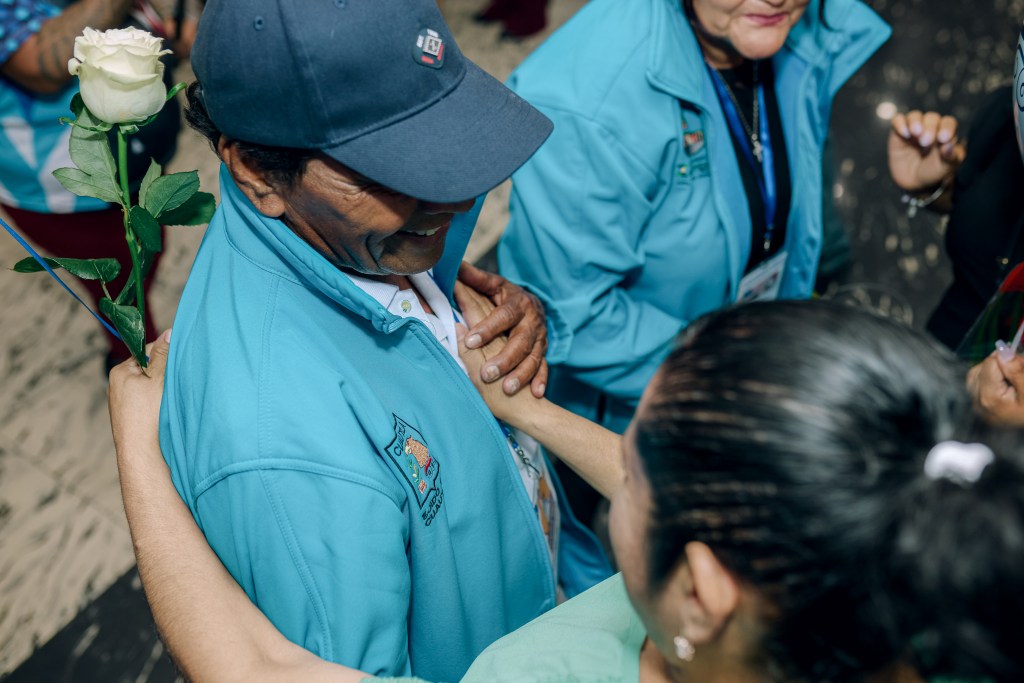The Painful Reality of Separation: Family Reunions Offer Hope Amidst Immigration Fears
For many undocumented immigrants in the United States, the dream of a better life comes at a steep price: separation from their families. Decades can pass without seeing parents, siblings, or other loved ones, creating a deep sense of loss and isolation. However, amidst the fear and uncertainty of immigration enforcement, organizations are working to bridge the gap and bring families together, if only for a short time.
In Queens, New York, a community center recently buzzed with a mix of excitement and anxiety. Dozens of people gathered, eagerly awaiting the arrival of family members they hadn’t seen in years, sometimes decades. The occasion was a “reencuentro familiar,” or family reencounter, organized by the Club Migrante Chinelos de Morelos, a cultural organization dedicated to supporting the Mexican community in New York City.
These reunions, facilitated in collaboration with local governments in the Mexican state of Morelos, are a lifeline for families separated by borders and immigration policies. Many of the relatives in New York are undocumented and have been unable to return to Mexico for fear of being barred from re-entering the U.S. The program helps Mexican family members, many of whom lack passports or birth certificates, travel to New York to see their loved ones.
Heightened Anxiety in the Face of Increased Enforcement
However, recent reunions have been tinged with a growing sense of unease. With increased federal arrests of immigrants, the joy of reunion is often overshadowed by the fear of potential separation. At the Independence Day gathering, Aurora Morales Gil, founder of the Club Migrante Chinelos, addressed the families, offering guidance on safety precautions in the event of an immigration raid.
Each family received a folder containing advice on how to prepare for such a scenario, including a list of local representatives to contact in case of emergency. Morales Gil shared a story of how Immigration and Customs Enforcement (ICE) recently detained the spouse of one of the club’s organizers, highlighting the very real threat that looms over these communities.
Félix Santana Ángeles, the community consul for the Mexican Consulate, emphasized the importance of knowing one’s rights. He urged families to memorize emergency contact numbers and report any ICE activity to the consulate. He also encouraged families with U.S.-born children to apply for Mexican citizenship for them, underscoring the right to live and resist persecution.
The Long Shadow of NAFTA and Immigration Policy
The need for these reunification programs stems, in part, from trade agreements like NAFTA, which allowed for the free flow of goods and capital but restricted human mobility. This led to an influx of Mexican immigrants into the U.S. in the mid-1990s, many of whom lacked the proper authorization to enter and have been unable to return home ever since.
Alyshia Gálvez, professor of anthropology at the CUNY Graduate Center, points out that these individuals “had no way of coming here with authorization. And so the targets for this kind of reunification program are those people who came in the mid-90s and have never been able to go back.”
While local governments in Mexico have historically supported these programs, funding has fluctuated, leading to the rise of private organizations that seek to address the devastating consequences of family separation.
The Cost of Reunification and the Importance of Documentation
These reunification programs are not without cost. The program run by the Club Migrante Chinelos de Morelos can cost upwards of $2,000 per family member, covering expenses such as flights, travel, visa appointments, and the acquisition of necessary documents like birth certificates.
Despite the expense, Gálvez emphasizes the essential role these programs play in mitigating the harms of border enforcement and facilitating the enrollment of marginalized people in Mexico into government identification systems. She also notes that the focus on recent asylum-seekers has overshadowed the plight of those who arrived decades ago and have no pathway to legal status.
Adapting to a Climate of Fear
In response to the heightened fear of immigration enforcement, organizations like Club Migrante Chinelos have had to adapt. Reunions are now held in more secluded locations, and publicity is kept to a minimum.
Morales Gil acknowledges the inherent unfairness of the situation, stating, “Most of these people don’t have the opportunity to obtain a green card, and they continue to contribute to the economy. It’s very cruel.”
The Emotional Toll of Separation
For undocumented New Yorkers, the decades-long separation from their loved ones takes a heavy emotional toll.
Two sisters, Rosa and Amalia, recently reunited after years apart. Rosa, who has lived in the U.S. for decades, arranged for Amalia to visit from Mexico. The joy of being together again was palpable, but the fear of potential separation lingered in the background.
As Rosa reflected on her experience, she acknowledged the sacrifices made in pursuit of a better life. “You come here for a better dream, for a better life… But it’s difficult not being able to return, not being able to see your family, missing out on so many things.”
The story of Rosa and Amalia is just one example of the countless families who are separated by borders and immigration policies. While reunification programs offer a temporary respite from the pain of separation, they also serve as a reminder of the urgent need for comprehensive immigration reform that addresses the needs of long-term residents and provides a pathway to legal status.

